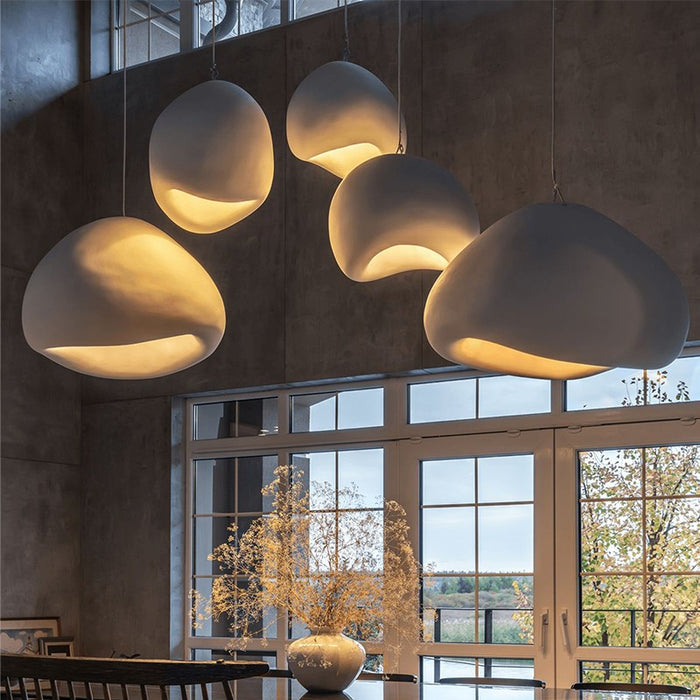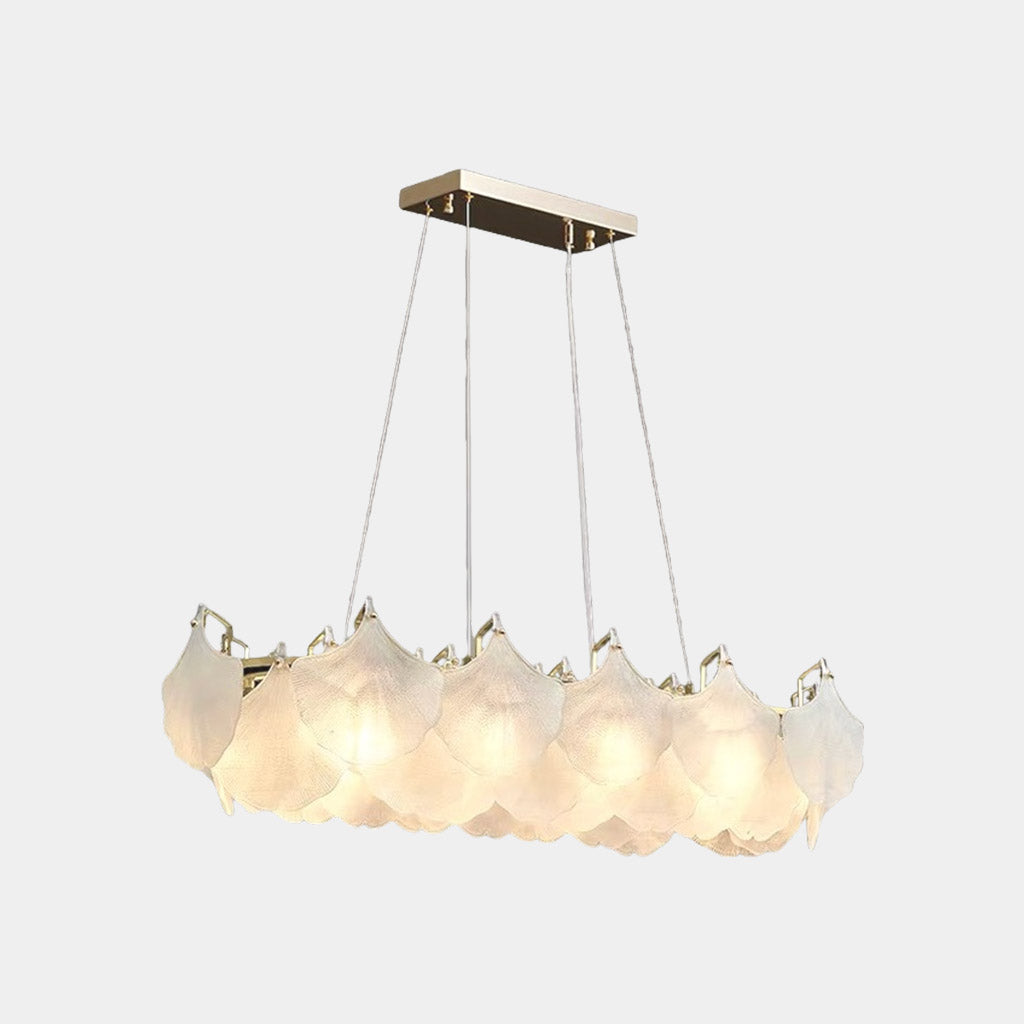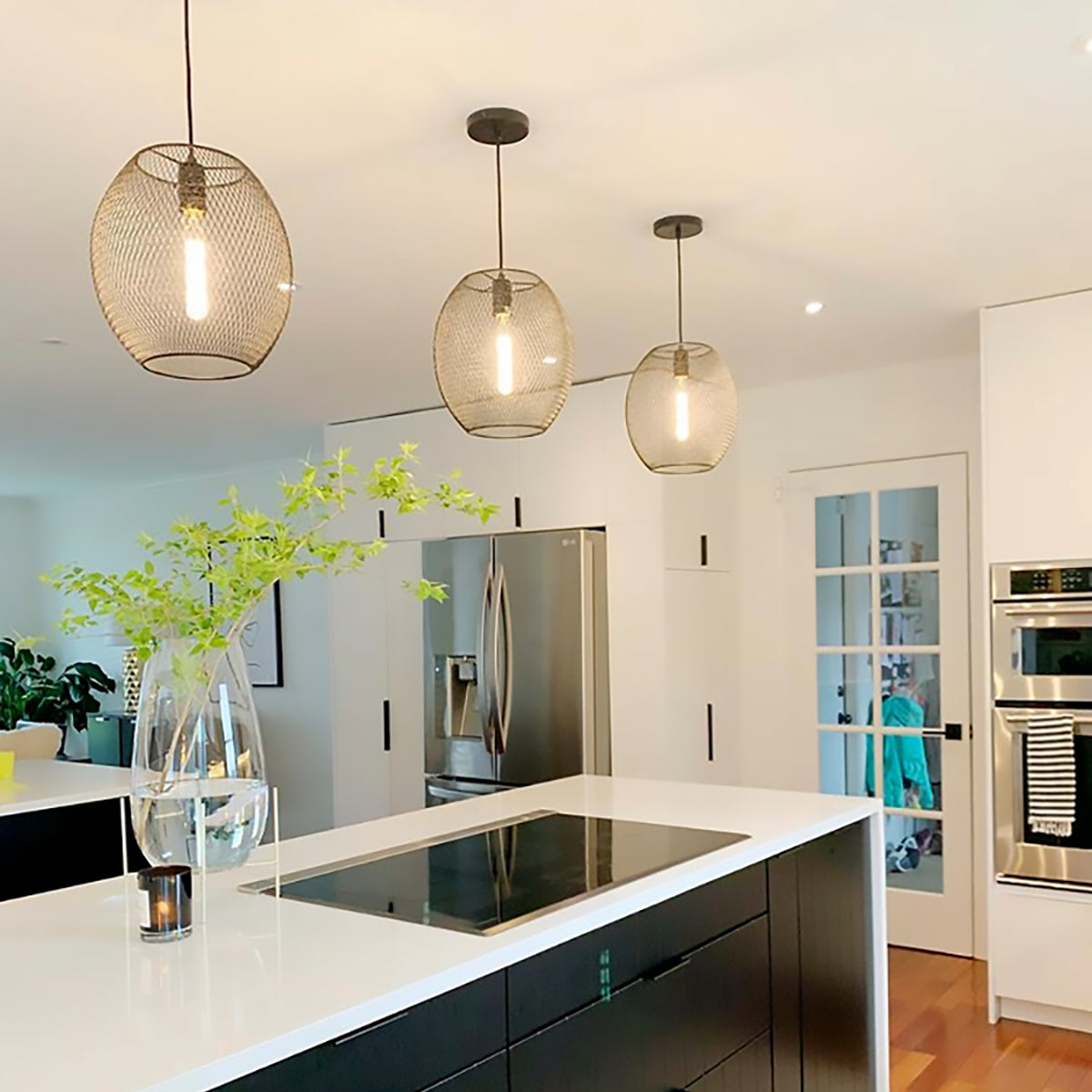The Role of a Pendant Light in Layered Lighting
A Comprehensive Overview to Putting Up and Preserving Your Necklace Light
Installing and preserving a necklace light requires cautious planning and implementation. Proper height dimensions can enhance both performance and layout. Vital devices and a clear installment process are critical for an effective setup. Routine upkeep warranties durability and performance. Comprehending these aspects can transform an area. Knowing where to begin might seem daunting. What steps should one prioritize to attain the very best outcomes?
Comprehending Necklace Light Styles
While several homeowners seek to enhance their rooms with pendant lighting, understanding the numerous styles available is crucial for making an enlightened option. Pendant lights come in a wide variety of designs, each offering unique aesthetic and functional advantages. Conventional necklace lights commonly include traditional shapes and products, such as glass or metal, providing a classic appeal. Contemporary designs, on the various other hand, might integrate strong colors and innovative products to create striking focal points.
Industrial-style pendants frequently utilize raw materials like revealed light bulbs and rustic surfaces, suitable for loft spaces and modern-day settings. For a more whimsical touch, vintage-inspired alternatives stimulate nostalgia with intricate information and retro coatings. Furthermore, minimal layouts concentrate on simpleness and clean lines, attracting those who like understated sophistication. Understanding these diverse designs permits property owners to pick necklace illumination that not only enhances their design yet likewise serves their sensible illumination requires successfully.
Measuring the Perfect Height for Your Necklace Light
How does one establish the best height for a pendant light? To achieve the very best functionality and visual appeal, numerous elements have to be thought about. Typically, a necklace light should hang 30 to 36 inches above an eating table to guarantee enough illumination without obstructing sights. Precede with high ceilings, the component might be positioned slightly greater to keep proportionality.
For cooking area islands, a height of 28 to 34 inches over the countertop is normally advised, enabling ample light coverage while preserving a welcoming atmosphere. In living areas, the pendant needs to be hung at a height that matches the bordering decor and does not produce a threat for individuals walking underneath it.
Inevitably, individual preference and space measurements play substantial roles in identifying the best elevation. Examining various heights before final setup might assist accomplish the wanted impact and capability.
Tools and Products Needed for Installment
Effective installation of pendant lights needs a details collection of devices and products to assure a smooth procedure. Important tools include a screwdriver, wire stripper, and a drill, which help with protected fixture accessory and correct circuitry. A voltage tester is essential for validating safety by making sure that power is off before beginning any electrical work.
Along with devices, specific materials are required for installation. These include the necklace light itself, electric circuitry, cable nuts for safe links, and installing hardware. A ceiling hook might additionally be needed, relying on the fixture's design.
For added safety and ease, a ladder will help in reaching high ceilings, while a degree guarantees that the light hangs uniformly. Preparing these materials and tools in advance streamlines the installment procedure, making it much more reliable and efficient. Correct preparation is vital to achieving a successful necklace light installation.
Step-by-Step Installment Process
With the necessary devices and products collected, the installment process for necklace lights can start. First, the power supply must be shut off at the breaker to ensure safety and security. Next, the installing brace requires to be affixed to the electrical box in the ceiling. After protecting it, the electrician's tape must be made use of to cover any kind of subjected cords.
Complying with that, the necklace light's wires are linked to the corresponding wires in the ceiling: black to black (or red), white to white, and green or copper for ground. Once the links are made, they should be protected with wire nuts.
The necklace light can after that be connected to the placing brace, ensuring it hangs at the desired height. Lastly, the light bulb is placed, and the power is transformed back on at the breaker, permitting the brand-new pendant light to light up the area.
Keeping and Cleaning Your Pendant Light
What steps should be taken to guarantee the durability and aesthetic charm of pendant lights? Routine upkeep and cleansing are crucial in protecting their appeal and performance. Dust and dirt can accumulate on pendant lights, reducing their sparkle. To clean up, a soft, lint-free fabric or microfiber towel need to be made use of, along with a gentle cleaner ideal for the surface area product - Pendant Light. For glass or crystal pendants, a glass cleaner can enhance clarity without streaks
It is recommended to transform off the light and enable it to cool down before cleaning. Furthermore, examining the fixture for loose bulbs or connections periodically guarantees safety and peak performance. If applicable, changing light bulbs consistently stops strain on electrical parts. Ultimately, preserving a risk-free environment by staying clear of exposure to dampness can significantly extend the life of necklace lights. Complying with these steps will certainly maintain necklace lights looking their best while functioning effectively.
Repairing Common Pendant Light Issues
When pendant lights breakdown, a number of common issues might emerge, consisting of flickering light bulbs, wrong installation, and voltage changes. Determining the origin cause is important for reliable fixing and ensuring peak efficiency. Dealing with these issues quickly can boost the durability and capability of pendant lights fixtures.
Flickering Light Light Bulbs
Flickering light bulbs can be a source of stress for house owners, frequently signifying underlying electrical problems or straightforward maintenance demands. This phenomenon may originate from loose light bulb connections, where the bulb is not firmly matched the outlet, creating periodic call (Pendant Light). Additionally, defective or aging light bulbs might flicker as they near the end of their life expectancy. An additional common cause is irregular voltage, which can arise from problems within the electric system or overloading circuits. Property owners need to also look for harmed circuitry, as this can result in flickering and posture safety and security risks. Routine examinations and timely replacements are vital to guarantee appropriate capability and to keep a secure home environment. Determining the origin without delay can prevent further problems

Wrong Installment Concerns
Inappropriate installment of necklace lights can lead to a range of issues that may appear like those created by flickering light bulbs. Usual problems include loosened circuitry links, which can interrupt the flow of electrical energy and result in intermittent lighting. Additionally, if the installing bracket is not firmly secured, the pendant may hang erratically, producing an unsteady fixture that can create resonances or noise. Wrong light bulb types or wattage can additionally add to performance concerns, as incompatible bulbs might not work efficiently in the component. Insufficient spacing from the ceiling can produce shadows or lower light distribution, diminishing the desired effect of the necklace light. Identifying and addressing these setup errors is crucial for accomplishing proper performance and aesthetic charm.
Voltage Fluctuation Issues
Although pendant lights can improve an area's setting, voltage changes can bring about significant efficiency issues. These fluctuations may create flickering lights, reduced brightness, or also premature light bulb failing. To diagnose such issues, one need to first inspect the light component's compatibility with the voltage supply. Using a multimeter can help determine voltage degrees and identify abnormalities. If voltage issues continue, it might be essential to examine the electrical system for loose connections or malfunctioning wiring. Sometimes, consulting a certified electrical contractor is suggested to ensure safety and security and conformity with local codes. Properly dealing with voltage changes not only enhances the performance of pendant lights however likewise prolongs their lifespan and enhances overall lighting quality.
Enhancing Your Space With Pendant Light Placement
Reliable necklace light positioning can substantially boost an area by sticking to ideal height guidelines, making sure the best lighting level. Layering these lights with other sources can develop a well balanced atmosphere, highlighting prime focus within the about his space. Accomplishing a harmonious look requires mindful factor to consider of both the component's placement and its relationship with bordering components.
Ideal Height Guidelines
When pondering the excellent elevation for pendant lights, a general standard suggests hanging them approximately 30 to 36 inches over a kitchen counter or table surface area. This height enables optimum illumination while making certain that the light does not block views or develop dangers. In dining locations, pendant lights should be placed to improve the eating experience, normally around 28 to 34 inches above the table. For cooking area islands, preserving uniformity throughout multiple necklaces can produce a natural appearance; spacing them evenly and sticking to the recommended elevation enhances capability. It is important to take into consideration ceiling elevation as well, as greater ceilings may need modifications to maintain proportionality and visual charm. Proper elevation placement considerably contributes to the general setting of a room.
Layering With Other Lights
As pendant lights are incorporated into a more comprehensive illumination design, they can substantially improve the atmosphere of an area. Their versatility enables them to be layered with ambient, job, and accent illumination, developing a harmonious equilibrium. For instance, combining pendant lights with recessed illumination can provide general illumination while highlighting certain locations. Task lighting, such as under-cabinet lights, can match necklaces in kitchens, making certain functionality without compromising design. Accent lights, like wall sconces, can additionally enrich the atmosphere, accentuating art work or building features. By strategically positioning these source of lights, home owners can achieve depth and dimension, transforming an ordinary room into a perfectly brightened setting that deals with different tasks and state of minds.
Centerpieces and Equilibrium

Tactically positioned pendant lights can function as enchanting prime focus within an area, attracting the eye and improving the general visual. When choosing pendant lights, it is important to take into consideration their color, shape, and dimension to assure they match the existing design. A vibrant, large pendant can develop a striking centerpiece above an eating table, while smaller sized fixtures might work much better in clusters to attain a balanced look. In addition, positioning necklace lights at varying heights can add deepness and visual passion to the space. Preserving balance with other components, such as furniture and wall shades, will make sure that the necklace lights improve the area without overwhelming it. Thoughtful positioning changes the setting, creating an unified and welcoming atmosphere.
Often Asked Inquiries
Can I Install a Necklace Light in a Recessed Ceiling?
The inquiry of whether a pendant light can be set up in a recessed ceiling usually occurs. Normally, it is feasible with appropriate installing equipment, making certain proper support and electric links for effective and secure installation.
What Sort of Bulb Is Finest for Necklace Lighting?
When picking light bulbs for necklace lights, LED alternatives are frequently liked as a result of their energy effectiveness and durability. Furthermore, the shade temperature level must match the wanted setting, with cozy white being a preferred choice article source for cozy settings.
Are Pendant Lights Safe for Outdoor Usage?

Exactly how Do I Select the Right Pendant Light Electrical Power?
Picking the ideal pendant light electrical power entails examining the area's size, wanted brightness, and fixture compatibility. Typically, reduced power levels suit ambient lights, while higher wattages give task lighting, making certain performance and aesthetic charm.
Can I Use a Dimmer Switch Over With My Pendant Light?
The concern arose whether a dimmer button could be made use of with a pendant light. Usually, if the light component and bulb work, a dimmer switch can successfully enhance atmosphere and control brightness degrees.
When pendant lights breakdown, a number of usual concerns may develop, including flickering light bulbs, inaccurate installation, and voltage changes. Improper setup of necklace lights can lead to a range of concerns that may look like those created by flickering bulbs. Insufficient spacing from the ceiling can develop shadows or minimize light distribution, decreasing the desired effect of the pendant light. Reliable necklace light placement can significantly boost a space by adhering to excellent height guidelines, making certain the right illumination degree. When picking bulbs for pendant lights, LED choices are usually preferred due to their energy effectiveness and long life.